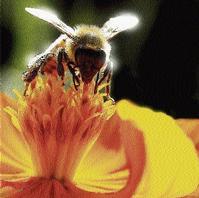Howard Moo Young, Contributor
Nectar hunt -photo by howard moo young
Nature photography includes a wide range of subjects, from wildlife to flowers, plants, insects and even microscopic life. At times, it can be highly specialised, but within it, everyone can find some personal area of interest.
As photographers, we must learn to apply the basic photographic techniques to specific subjects we like to photograph. Nature photography is particularly useful because it demands some knowledge of
the subjects you are setting out
to photograph, be it flora or
fauna.
You are not expected to become a wildlife expert or botanist overnight. However, within this broad field, you should be able to find at least one area of interest. For most non-specialists, the easiest subjects are flowers, plants, and such access to creatures as spiders on webs. Whatever aspect you choose, the important thing is that you learn a little about the subject beforehand.
Stuart Lacy is a perfect example, having not only mastered his camera, but has a wealth of knowledge about birds - every kind of feathered friend that he comes in contact with. He and other bird lovers spend hours studying the various species in their natural setting. He has some amazing stories about his personal encounters with members of the bird family.
Wildlife/Stalking
Stalking elusive, shy animals and birds demands a combination of field craft and familiarity with the camera controls. The former means that you should have some knowledge of the animal's habits, patterns of behaviour and senses, from Jamaica's iguana to the wild pig. Most birds, for instance, have good eyesight, whereas most mammals rely on their sense of smell. The ability to move inconspicuously, by walking quietly and taking advantage of cover and shade, is also important. Because photographic opportunities tend to occur quickly, it is vital to be well-prepared, with as many of the camera controls as possible preset. This means, for instance, anticipating the distance and light levels of the shot.
If the wildlife is accustomed to the movements of boats as what occurs on a boat safari up the Black River, you can capture some interesting bird shots with a good telephoto lens and fast film, or with your digital camera set at a high ASA, better still, a lens with a built-in stabiliser is an asset. Make sure you visit at the time of day when the birds are out in their numbers, or the crocodiles lazing on their favourite logs.
Flowers and plants
Here, equipment and techniques depend largely on the scale of the shot. There are three basic types of flower shots - close-up, the complete flower, or the bloom in the setting. A photograph of a single flower filling the frame still makes use of some close-up techniques; a macro or close-focusing lens is best. As the setting for most wild flowers will be cluttered with other vegetation, you will need to take some care to isolate the flower from its surroundings. One method is to clear away other leaves and blades of grass; another is to choose a low camera position that sets the flower against a cleaner, more suitable background. By adjusting the aperture setting so that the depth of field covers only the subject, the background can be thrown out of focus; this is particularly effective with a long-focus lens.
To prevent the movement that even the slightest breeze can create, it may be necessary to support the stem of the flower gently with a coiled length of thick wire embedded in the ground. Alternatively, a piece of card can be used as a windbreak. Make sure that your camera is well supported with a steady tripod.
Insects and other
small creatures
These subjects fall within the realm of photomicrography and close-up photography. Depth of field is one of the greatest problems; a small aperture is the obvious solution, but this calls for strong illumination. Here, portable flash is often useful. Nevertheless, by careful focusing and through good use of available light and reflectors, many insect photographs can be created without resorting to artificial lighting. Try, for instance, using the sun to backlight a spider's web.
Pets and the zoo
Your pet dog, cat, snake, parrot, bird are excellent subjects to photograph. A visit to a zoo also offers great opportunities with a more natural setting. Petting zoos allow you to get real close to animals that are used to humans, so take out your camera and look out for some great nature images.
Howard Moo Young is an advertising/graphic design/photography
consultant with over 40 years
of experience. Feedback to mooimages@yahoo.com.

